
This is an interesting question that can be answered in two ways. If you want to annotate a book to better understand what you read, it’s one thing. If you want to annotate resources for an academic paper, then you need to create an annotated bibliography.
In this article, we will discuss both book annotation cases and provide examples for them.
- How to Annotate a Book—Annotation as a Reading Strategy
- How to Annotate a Book—Annotated Bibliography
How to Annotate a Book—Annotation as a Reading Strategy
Annotating a book is an active reading strategy that can help you understand and analyze the material better.
It involves making notes and highlights directly in the book as you read. With the help of annotations, you can track your thoughts, ask questions, and leave your reactions—in other words, you’re reading more actively.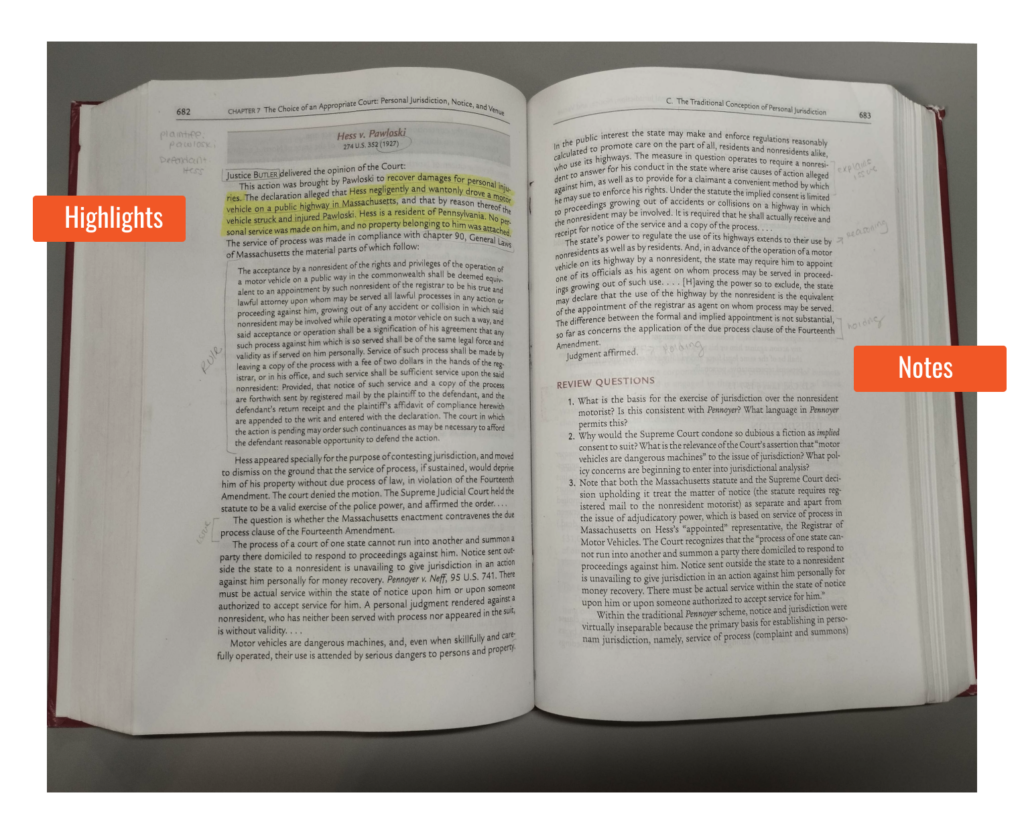
Why Annotate?
It’s a great question, particularly if we consider the visual appeal of the book. However, if you own the book and do not intend to sell it in the future, you are free to do whatever you wish with it. It’s true for all books but works especially well for textbooks: annotating while reading helps organize the most important information, identify key concepts, and track your learning progress. It also helps you prepare for exams more effectively and efficiently.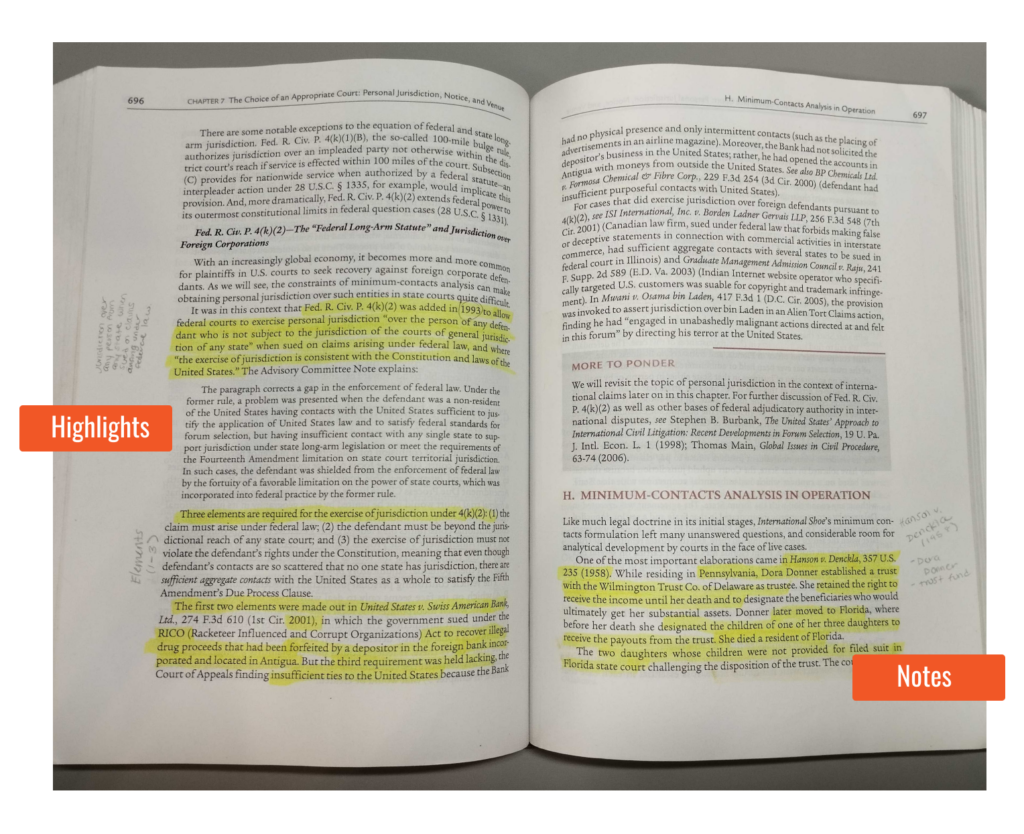
How to Annotate?
To annotate effectively, use a few or all of these tips:
- Sum up key points in your own words.
- Circle or underline key concepts, phrases, or any unfamiliar or vocabulary words. You can even write their definitions in the margins.
- Highlight or underline important parts such as the sentences carrying the main idea of a paragraph, chapter, etc. You can even put brackets around it.
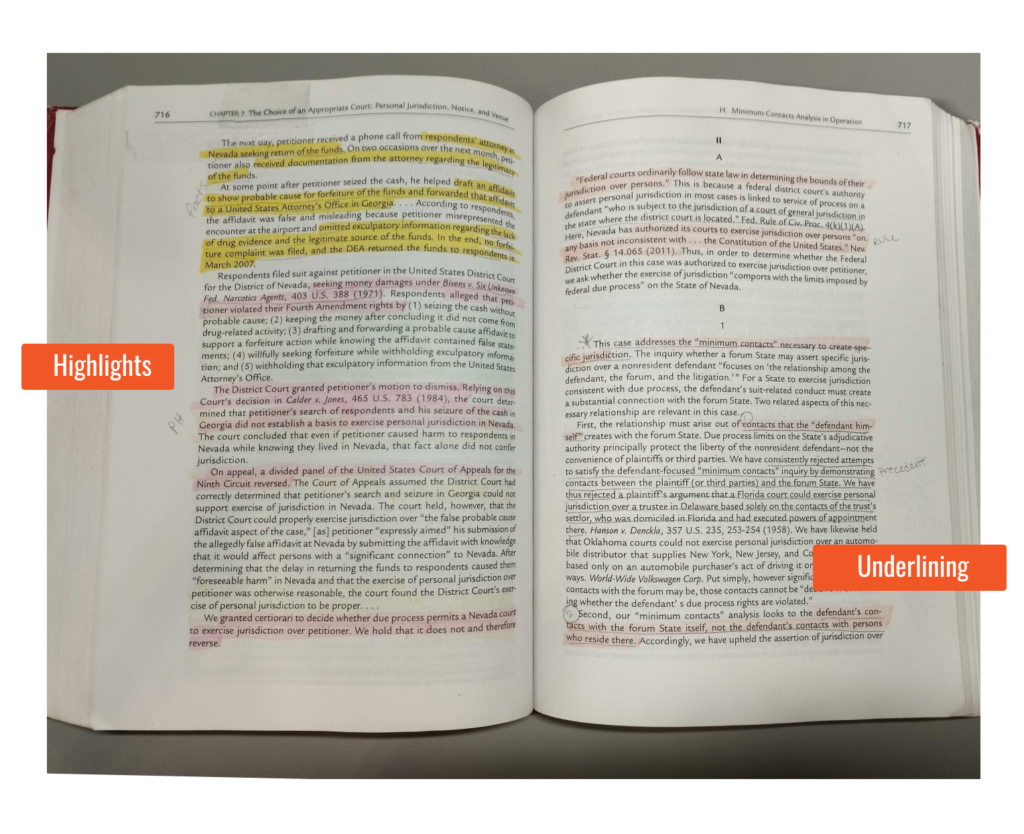
- Write short comments and questions in the margins: any intrinsic details, examples, facts, or quotes.
- Use abbreviations and symbols to mark your reactions (e.g., “?” when you have a question about a particular piece of text, “!” when you find something noteworthy, “*” when there’s a good example or evidence for future use—or any other symbols you like). You can even use shorthand writing if you know how to do it.
- Use colored sticky tabs to note parts of the book to get back to. Label the colors to use in different cases (e.g., blue for great quotes, pink for questions, orange for things to remember, etc.)

By annotating the content, you can better summarize what you read. Annotations can also help you take notes later on.
How to Annotate a Book—Annotated Bibliography
Annotating a book as in creating an annotated bibliography is an entirely different process.
An annotated bibliography is used to showcase the importance, accuracy, and credibility of the sources you decide to cite. It also helps you understand the assigned topic better. Also, you can be asked to create an annotated bibliography to check your ability to choose relevant sources for your topic.
Citing vs. Annotating
When it comes to academic writing, it’s important to differentiate between citing sources and annotating a book. Although the two terms are closely related, they are not interchangeable.
A citation simply provides the publication details of a source, formatted in a particular style (e.g., MLA, Chicago style, or APA). In one of our previous articles, we discussed how to cite a textbook, and you can check the full text on our blog: How to Cite a Textbook: A Comprehensive Guide.
An annotation goes further by summarizing the content and evaluating the relevance or quality of the source if you mean it in the context of an annotated bibliography. If you’re creating an annotated bibliography, you first cite the book, then provide a paragraph summarizing and evaluating it as a source.
Annotated Bibliography Types and Examples
Most commonly, you’ll be expected to write either of these annotated bibliographies:
- Descriptive Annotations: These annotations are exactly what they say: they describe the source.
- Summary Annotations: Informative or summary annotations provide a summary of the source.
- Evaluation Annotations: An evaluation annotation focuses less on summarizing and more on evaluating the source.
When you create a bibliography, it’s important to consider why you’re making it. Depending on the purpose, you may want to summarize, evaluate, or reflect on sources. Alternatively, you may do all of it in a combination. Think about why you’re making the bibliography and what instructions you were given before deciding what information to include.
All annotated bibliographies follow a simple but strict structure: a title, annotation, and citation. The annotation itself is usually a piece of text, but the title and citation depiction vary based on your style. Most commonly, you’ll use one of the three: MLA, APA, or Chicago styles.
Here’s an example of an annotated bibliography in the APA style format (7th ed.):
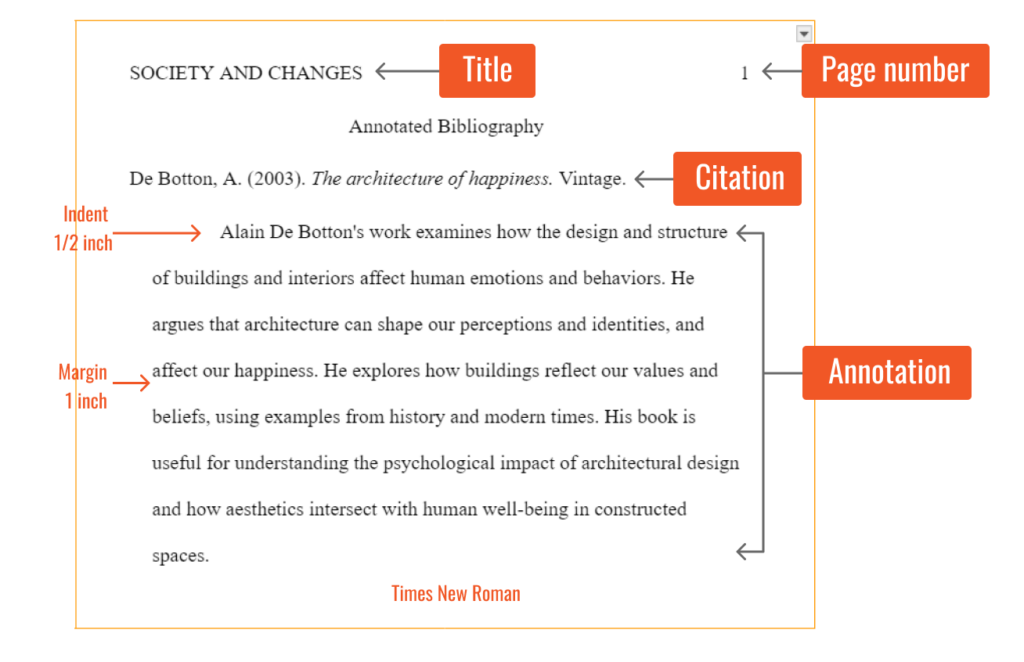
Here’s an example of an annotated bibliography in the MLA style format (9th ed.):
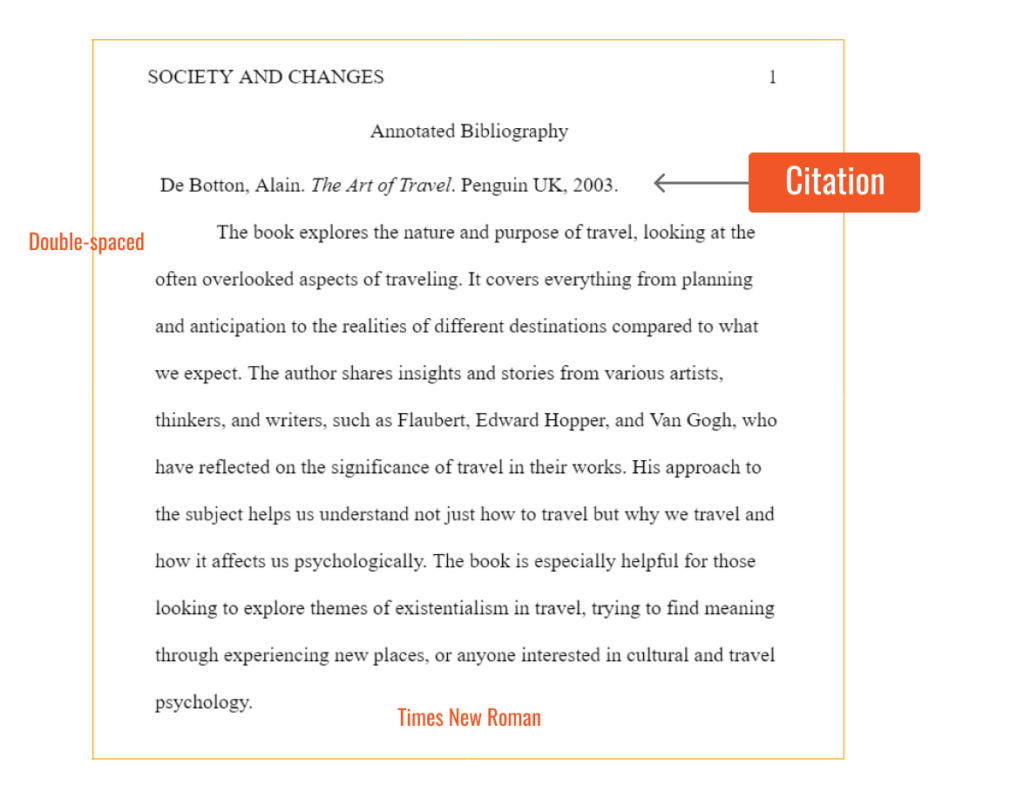
Here’s an example of an annotated bibliography in the Chicago Manual of Style format (17th ed.):
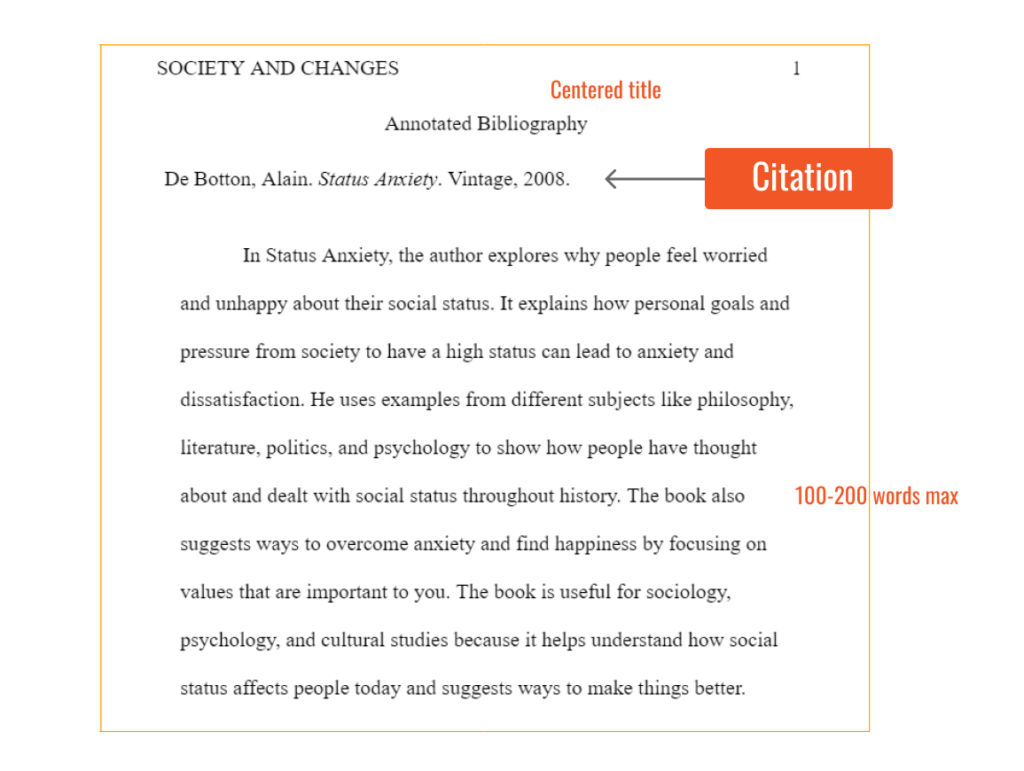
If you learn to annotate, you’ll acquire a great skill that will help you understand any material better. While it’s really up to you to decide whether your book will stay pristinely clean without any marks or highlights or you’ll be identifying key points, asking questions, and noting your reactions in the text itself and the margins, we just point out that annotating does help gain a better and deeper understanding of the book’s arguments.
The same goes for annotated bibliographies—knowing how to create them and some practice will help you a lot in your studies. Now, we hope you know the difference between annotating and creating annotated bibliographies and know how to do both.




